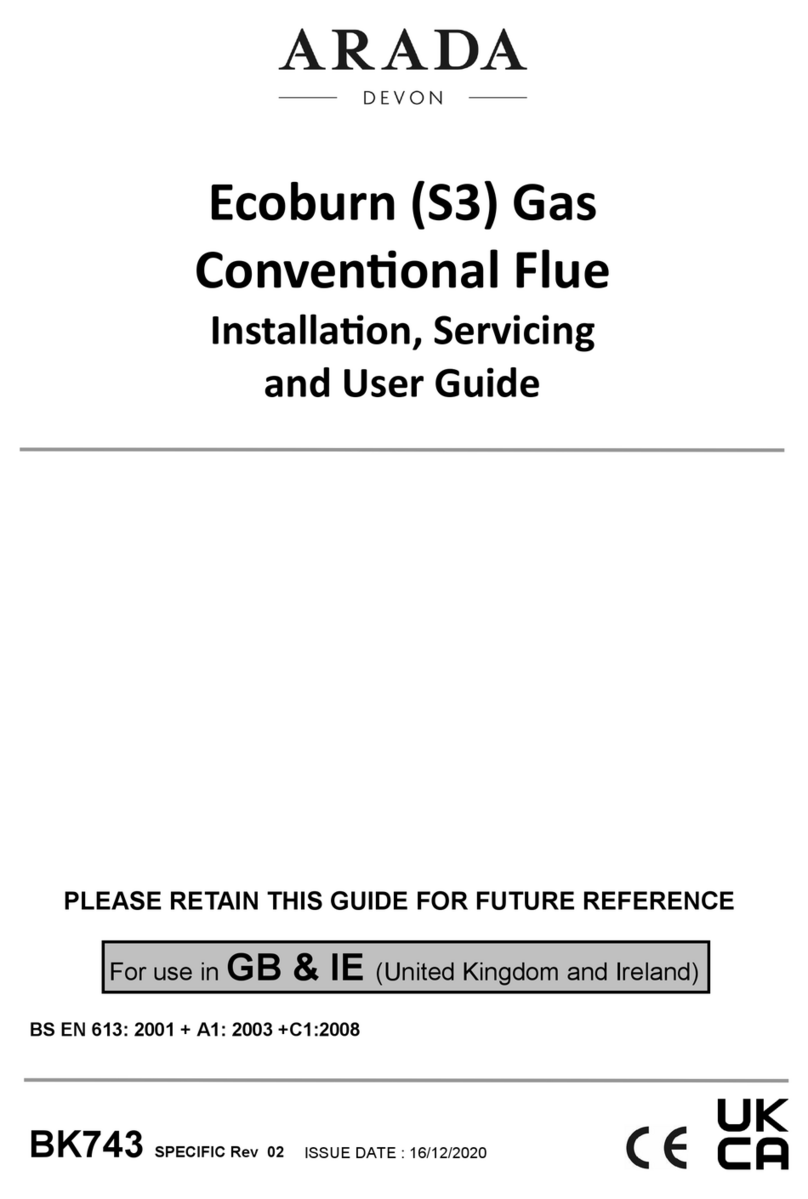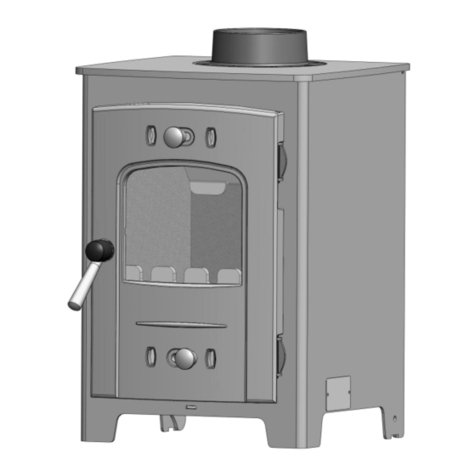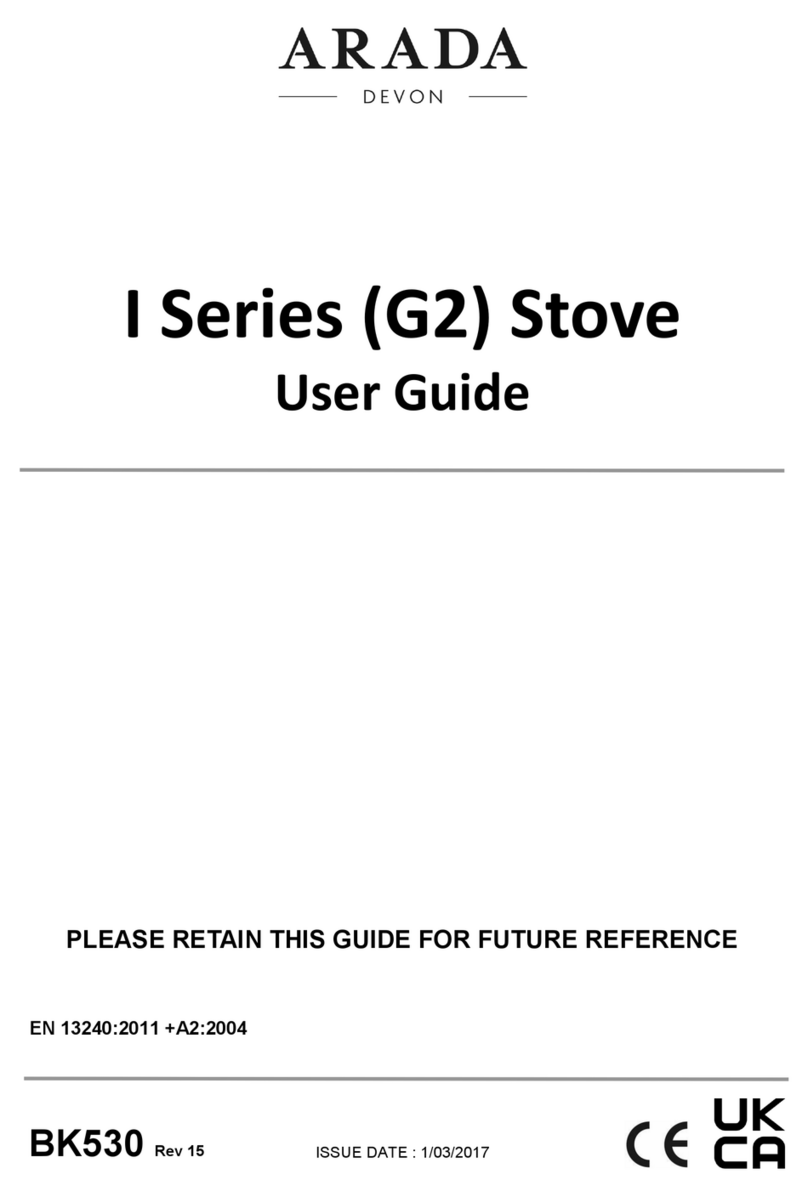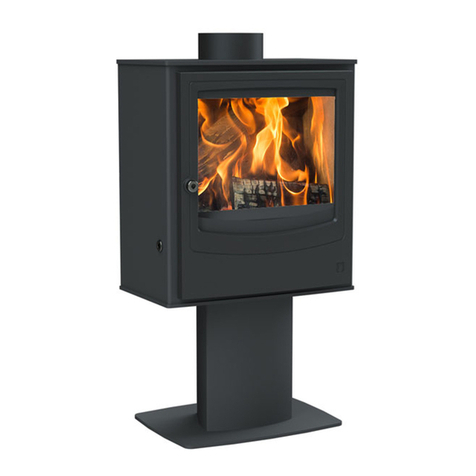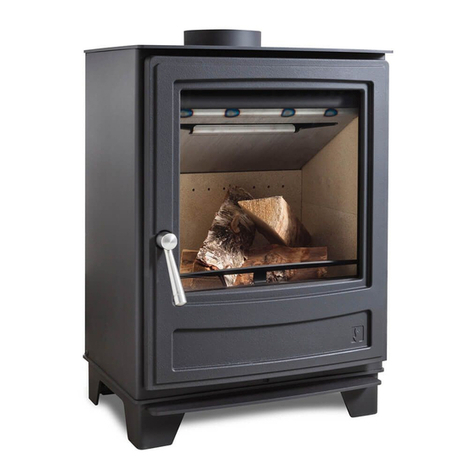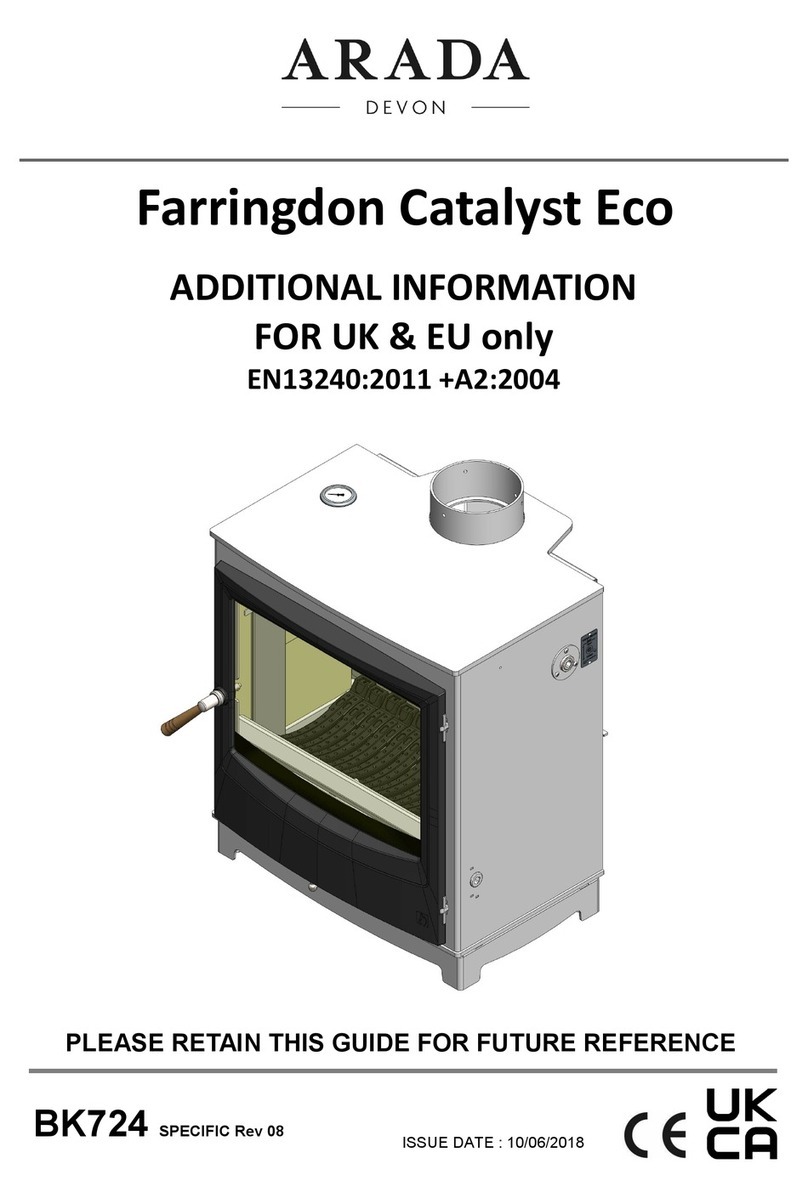Arada Installation Manual 5
INSTALLATION
GRATE BARS
In a multi fuel stove the grate comprises of a
series of cast iron grate bars, seated on a pair of
combs. All bars in the grate are identical.
In stoves which feature a riddling grate system the
bars should be seated with every other bar
rotated through 180 degrees, so the ends marked
’H’ and ’L’ alternate on each comb.
In stoves with non-riddling grate systems the grate
is assembled with the ends of the bars marked ‘H’
sitting on the front comb, and the ends marked ‘L’
sitting on the rear comb.
FLUES AND CHIMNEYS
The flue draw is critical on any installation and
should be checked to ensure that it matches
what is specified. If it is higher than
recommended, provisions must be made to
correct the over draw.
The draw can vary in different weather
conditions and the customer should be made
aware of this. Failure to correct an over
drawing flue will invalidate the warranty.
The stove must be connected to a suitable and
efficient flue so that products of combustion
(fumes) from the stove are expelled to the
outside air. To ensure a good up draught it is
important that the flue gases are kept warm and
that the flue size suits the stove. The termination of
the outlet at the top of the flue also needs to
comply with Building Regulations. The minimum
effective height of the flue must be at least 4.5
metres from the top of the stove to the top of the
flue outlet. When warm the flue draught should be
between 0.1 to 0.2 mb.
A chimney may comply with regulations but could
still be subject to down draught and
similar problems. A chimney terminating above
the ridge level is generally less likely to suffer
such problems.
If a new chimney is being built / installed it
should fully comply with the relevant Building
Regulations that specify the requirements for
solid fuel burning installations.
The flue and chimney installation must be
carefully checked by a competent person
before fitting the stove to ensure it is suitable
and will work safely.
If the chimney is old (ie: built of brick or stone
without a liner) or being opened up for reuse
additional checks and smoke testing as
described in Appendix E of the Approved
Document J 2002 Edition should also be
carried out to ensure the flue and chimney are
in good operating condition.
Check the existing flue is in good condition
with suitable access for collection and removal
of debris. If the flue size is more than 225mm
(9”) diameter or 200mm (8”) X 200mm (8”)
square, a suitable lining of 150mm (6”) diame-
ter should be fitted. This should be a double
skin stainless steel flexible liner that is inde-
pendently certified for use with solid fuel.
Details of suitable linings for use with wood and
solid fuel are given in the Official HETAS guide
that can be viewed on their website at
www.hetas.co.uk.
It is also important that suitable flue pipe
complying with the Building Regulations is used
to connect the stove to the flue in the
chimney and that suitable access is provided
into the flue for regular inspection and
sweeping of the flue ways other than through
the appliance (e.g. wherever possible a soot




